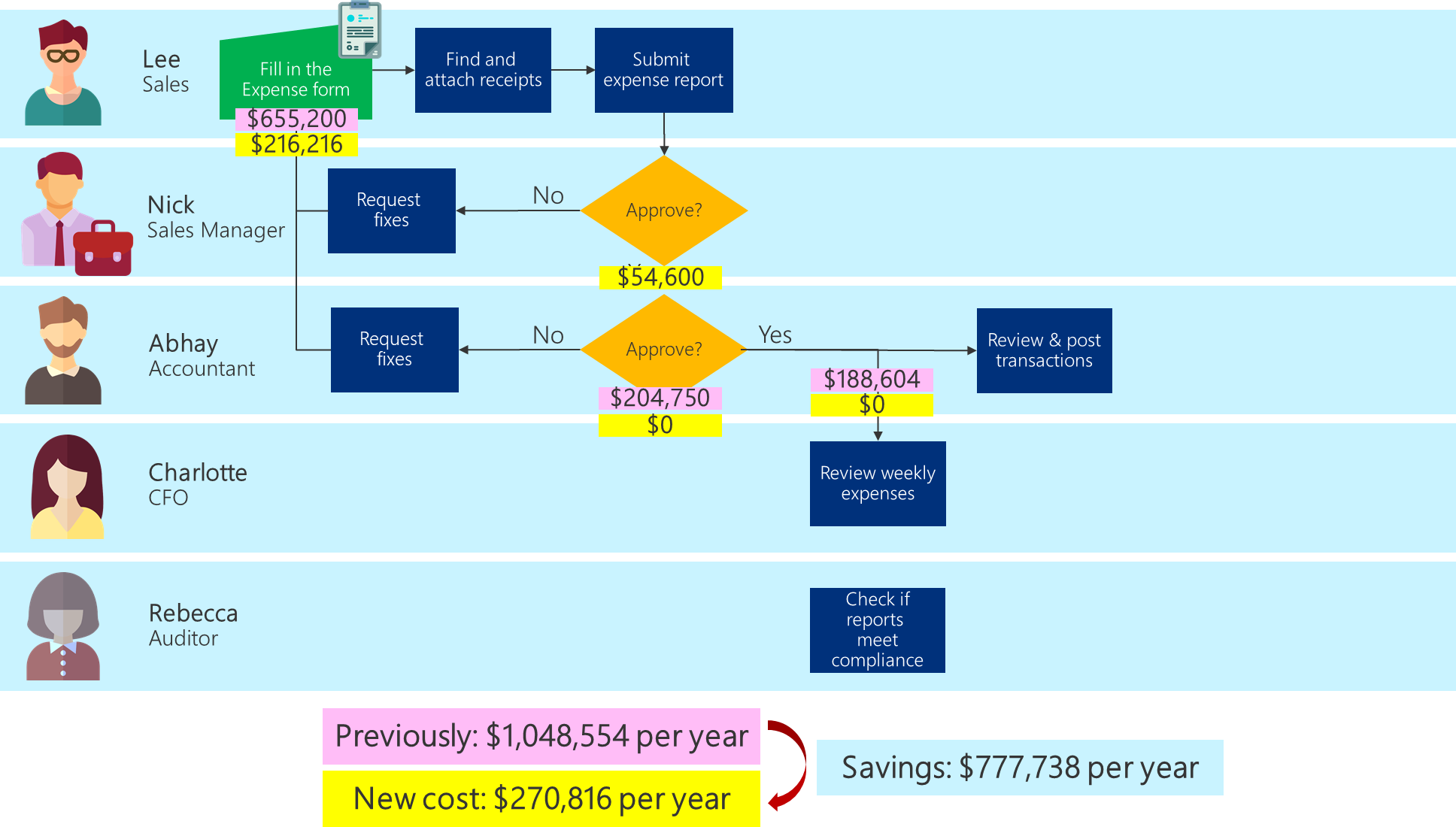Note
Access to this page requires authorization. You can try signing in or changing directories.
Access to this page requires authorization. You can try changing directories.
Business value falls into one of four categories, easily remembered as REVO:
Revenue: This solution brings in revenue that wouldn't otherwise be realized, through a new line of business or a service that hasn't been offered before.
Efficiency: Efficiency is effectively cost savings. This solution allows participants who execute the process to do it faster.
Volume: Cost avoidance is achieved by enabling current users to process more transactions, in turn avoiding the cost of additional resources.
Other: The solution helps the organization comply with its "must do" requirements, which may result in avoiding financial penalties.
After the category has been defined, we need to define the value that we'll achieve:
Revenue
Determine what will be charged for the service
Determine how many customers will buy the service or product
Determine the time horizon to measure (monthly, quarterly, annually)
Revenue = (price × customers) for the time horizon
Efficiency
Determine the number of people doing the job today
Determine the amount of direct time they take to do the job today ("old time")
Determine the number of people who will do the job after the Microsoft Power Platform solution has been built
Determine the amount of direct time it will take to use the new solution ("new time")
Time savings = old time – new time (To convert this to dollars, multiply the time savings by the fully loaded cost of the people for the time unit you're measuring in (for example, hours).)
Volume
Determine the volume of transactions that a single person can process for a certain unit of time ("transactions per person")
Determine the volume of transactions that the new solution will be able to process in that time ("new transactions per person")
Determine the volume of transactions that need to be processed in that time ("volume")
Cost avoidance = (volume ÷ transactions per person) – (volume ÷ new transactions per person)
This calculates the number of people who won't have to process transactions to achieve the volume processed by the solution.
Other
- Determine the penalty that can be avoided by having the information captured and available in the solution
If the business value you'll receive by automating the process doesn't compare favorably to the cost of doing nothing, you must ask yourself whether this is the right business problem to focus on.
However, if the business value you receive by solving the business problem is greater than the cost of doing nothing—plus your development time and the monthly cost of any software license—it makes sense to automate the process.
Example: The business value of automating the expense process
In the case of our example app, the main category of business value is efficiency. The new app will reduce the amount of time it takes to process the same number of expense reports each week, month, and year. We reviewed the new process and what we'd like the app to accomplish with our future users. We asked them how much time they expect to save with the new process and being able to build in some of the rules in the expense report app.
We'll still have 140 expense reports being submitted each week; that hasn't changed. However, when we talked with the people submitting reports, we found that we'd be able to reduce the time they spent down to 20 minutes—by their being able to enter information immediately and take pictures of receipts when a receipt was required. The fully loaded cost also remains the same.
(140 expense reports a week × 20 minutes) × $90/hr = $4,158 a week = $216,216 a year
Nick will be reviewing the expense reports of the team (roughly 100 salespeople) and estimated that it will take roughly 5 minutes to review each expense report. Nick's review is limited to the type of expenses being submitted, recognizing that the need for receipts—and the need to include the names of guests at meals and distribute hotel expenses into the appropriate categories—will be controlled by the app.
(100 expense reports a week × 5 minutes) × $90/hr = $750 a week = $39,000 a year
Other managers will review and approve the expense reports from their departments going forward, so the remaining 40 expense reports will cost $15,600 a year.
The work for Abhay and their team has now shifted to spot checking reports. They shouldn't need to do any rework; in fact, Abhay's team might be able to be tasked with other activities due to the reduction in effort needed for reviewing expense reports.
We optimized the process to associate the correct general ledger accounting code to each of the expense categories. Now Abhay and their team can extract the data to create the payment journal, reducing the 40.3 (16.5 for coding + 23.8 for posting) hours a week down to a few minutes, saving $188,604 ($77,220 for coding and $111,384 for posting) a year. Abhay might be able to task some of their team with other, more important, work in their department.
With the new process, Abhay and their team can consider posting the expense reports every day, which will provide Charlotte with an updated view of the budget each day. This will also allow Charlotte to respond more quickly as budget constraints approach.
The new cost to the company using the automated app is roughly:
$216,216 + $39,000 + $15,600 = $270,816 a year
Saving the company roughly $777,738 each year
